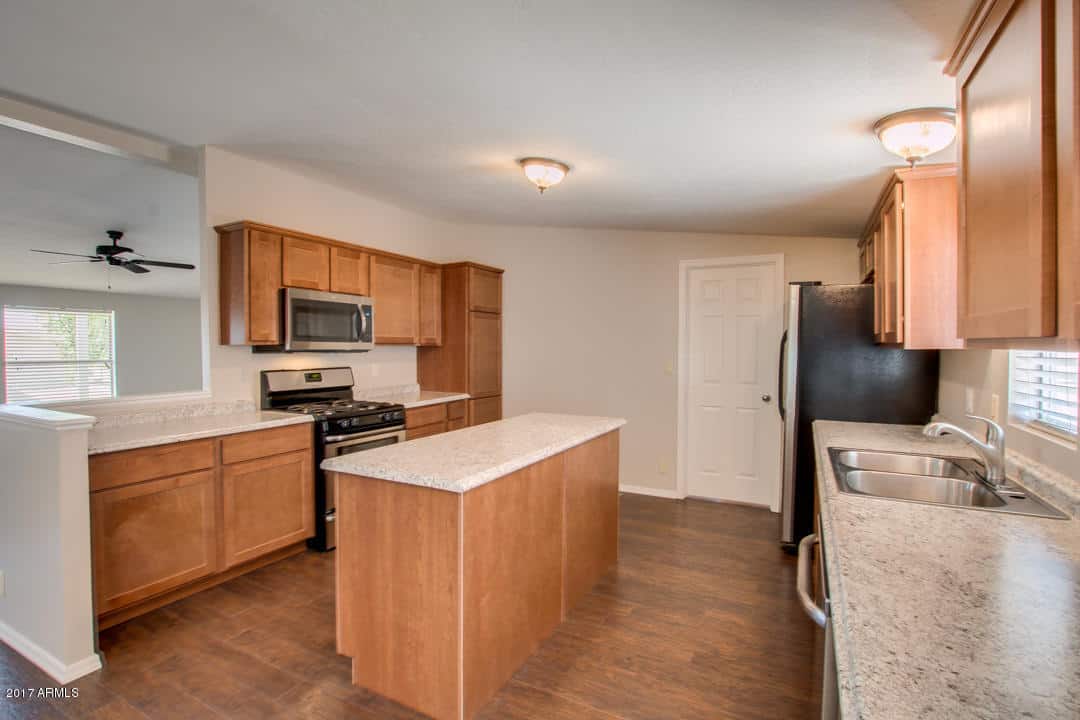(Updated December 5, 2025) Newer manufactured homes are looking better than ever before. In the last few years, I’ve been in some that look and feel like a traditional stick-built home. However, by the time you select upgrades, purchase the land, and pay for the setup, the cost can often approach the price of a site-built home. The strategic and often more profitable option is to buy an older manufactured home already on a desirable site and remodel it to look new again. How difficult and expensive is this? Not as much as you think. As an investor, I break down the entire process—from purchase price negotiation to final granite installation—using a real project example to show you how to execute a remodel that generates significant profit and provides beautiful, affordable housing.
Affiliate Disclosure: This guide contains affiliate links to products used and recommended for profitable mobile home remodeling, including flooring and hardware. If you purchase through these links, Mobile Home Friend may earn a small commission, at no extra cost to you.
Most people want to make their home look as good as it possibly can, regardless of the type of home that it is. After all, our homes are our castles!
At Mobile Home Friend, when we work on the flip or remodel of a manufactured home, we are always looking for ways to make the home the most inviting possible. This usually means, trying to make the home, regardless of its age, look as much like an attractive stick-built house as we can.
Table of Contents
The Short Answer
We are currently in the final stages of remodeling a 1983 double-wide mobile home that we’re doing a flip on. What did we do to it to make it look more attractive?
- Walls – Taped and textured the old wood paneled walls.
- Ceilings – Scraped and retextured the old popcorn ceilings.
- Trim – Removed all of the old plastic moldings around the corners, doors, floors, and ceilings.
- Cabinets – Removed all the old particle board and vinyl cabinets and replaced with new cabinets.
- Vanities – Removed the old particle board vanities in the bathrooms and replaced with new ones.
- Countertops – Replaced the old laminate tops with granite
- Doors – Replaced the old lightweight hollow-core doors with stick-built home type replacements.
- Hardware – Replaced all of the old, inexpensive doorknobs, hinges, light fixtures, and plumbing fixtures.
- Flooring – Installed new luxury plank type vinyl flooring throughout.
The list of what could be done is almost endless, but, on this list are the types of things that we do in most every mobile home that we remodel. Why? When finished, the inside of the home looks as close to a stick-built home as we can get it. The homes almost always sell immediately because of how attractive they are.
Not any one thing is responsible for making a mobile home look like a mobile home. More, it is everything in concert together that give the appearance of a “mobile home”. We’re going to take a closer look at how man of these things can be rectified to give your manufactured home a more substantial feel.
Walls
Walls in an older manufactured home, can instantly give the feeling of “trailer” to any manufactured home. Many older mobile homes built up into the 1990s have old school paneling that was so popular in everything back in the 1960s and 1970s.
Walls are the first place the stigma of manufactured housing takes hold. If you are debating the quality difference in general, check our resource: Is the Quality of Manufactured Homes Lower than that of Site-Built Homes?
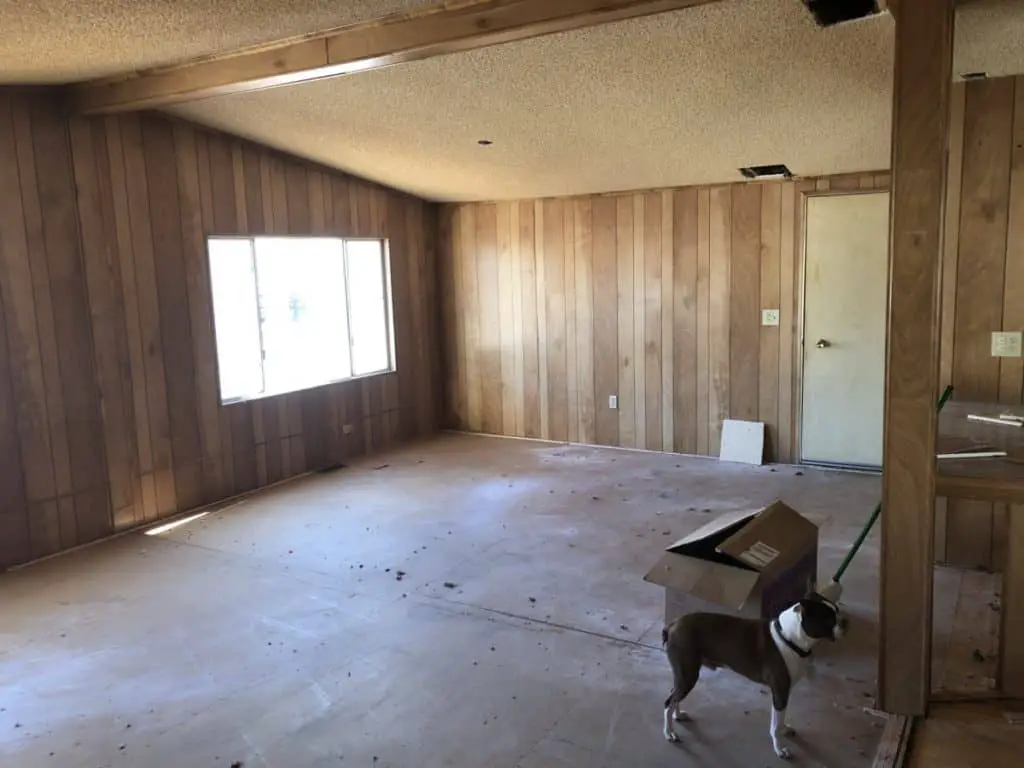
If you have paneled walls in your mobile home, the easiest way to get the look of drywall is to do the following with your paneled walls:
- Remove all trim from the walls
- Prime the walls with an oil based primer
- Fill in the line gaps in the paneling with drywall mud
- Tape and mud the joints between the 4 x 8 sheet of paneling
- Spray orange peel texture on the walls
- Prime the walls for paint with a latex primer
- Paint the walls
A couple of things are important to note here. Most all of the old paneling used in mobile homes have a vinyl type of coating on them. By using an oil based primer over the entire wall, it will allow the drywall mud, the tape, and the texturing to stick to the walls.
The paneling used on these older mobile homes is quite thin and can flex when pushed on. Because of this, the walls tend to have more waves to them than those in a stick built house. The reason for using only orange peel texture is because that texture is applied by spraying only, not by using any type of trowel. This allows an even texture to be applied on the wall.
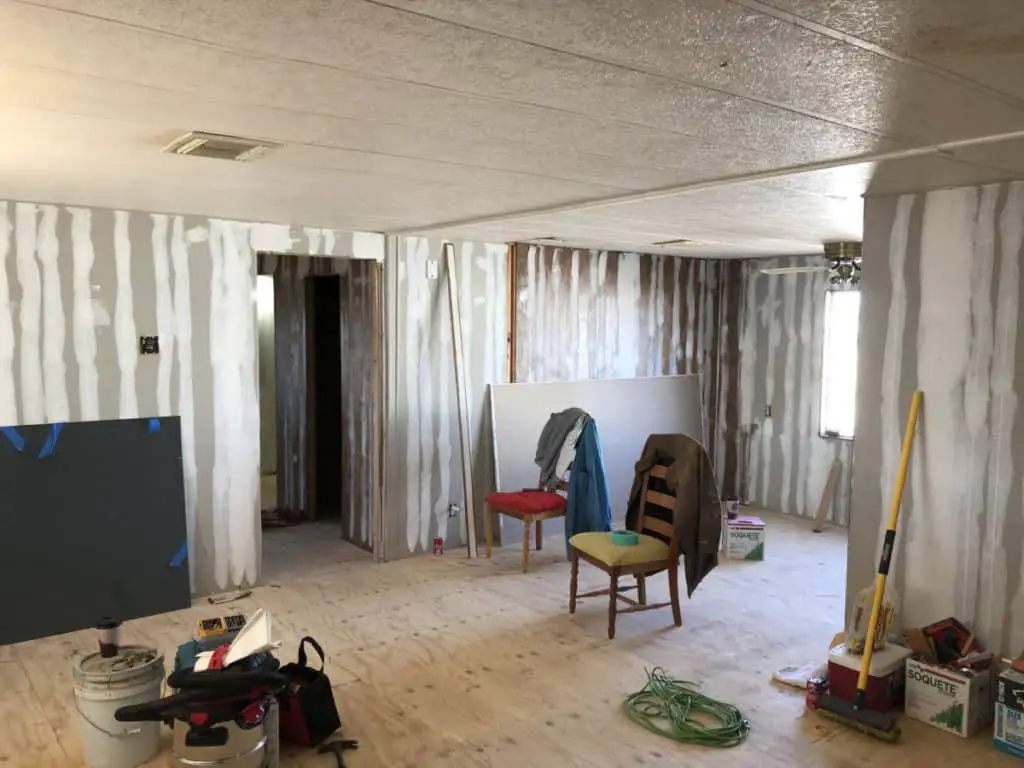
When this process is followed, the texture and paint on the walls is very durable, even if the wall is pushed on and flexes. The final result has the look of drywall.
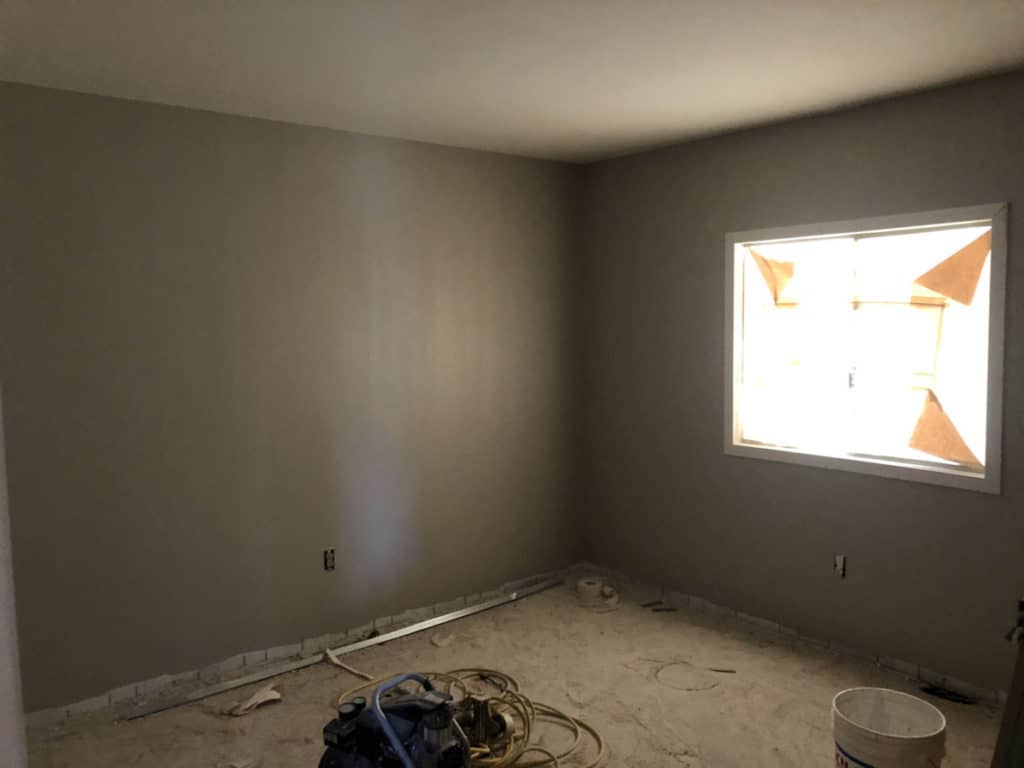
Ceilings
Traditionally, the older the mobile home, the lower the ceiling height. Up until the 1980s, most ceilings in mobile homes were 7′ to 7.5′ in height. In addition to this, most were made of acoustical panels that are about 12″ wide and span the width of the home. Each panel is separated by a plastic molding strip.
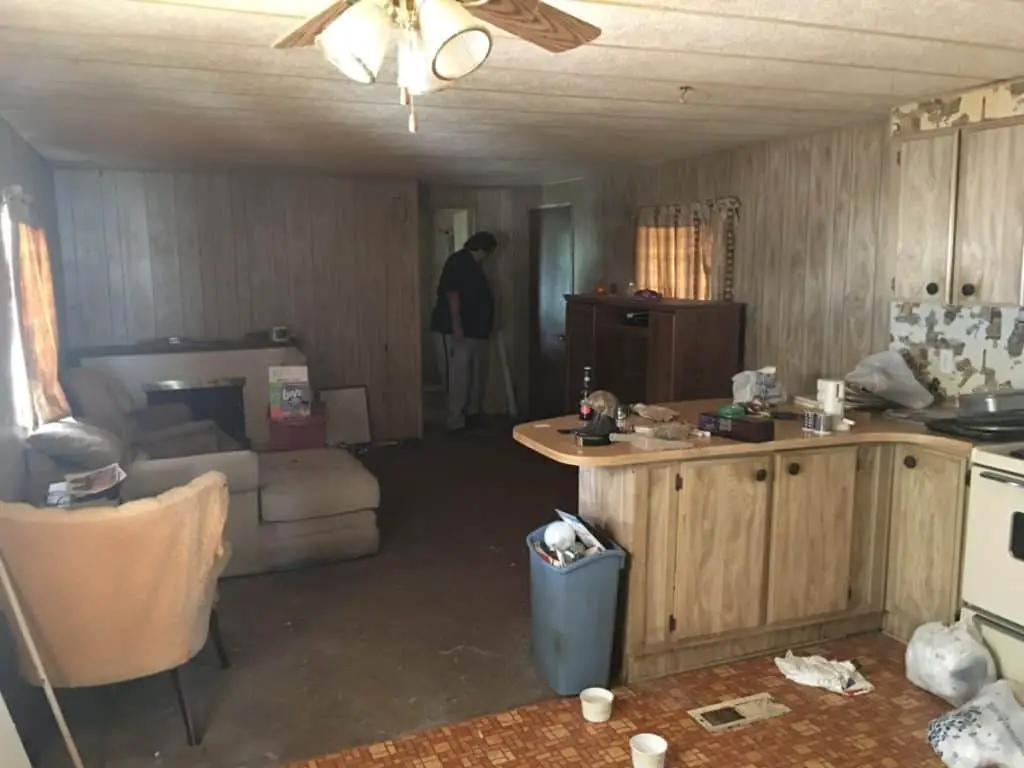
These panels are pretty durable. However, water can damage them and make them warp. If they are in good condition, just painting them bright white can make them look much better. If there are any water stains, be sure to use Killz Primer before painting. This keeps any stains from blueing back through.
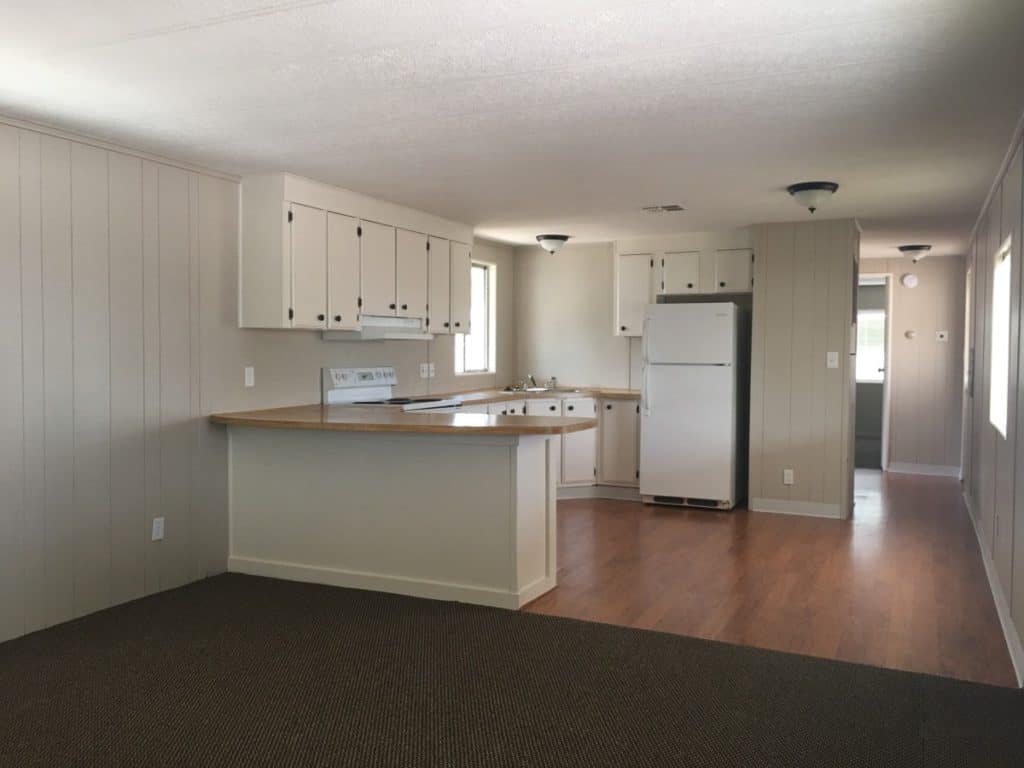
Starting in the 1980s, manufactured homes started using drywall on the ceilings, and many of these ceilings were vaulted, going from 7′ at the walls to 9′ at the peak. This change made the homes feel much larger and more like a traditional house. Most of these ceilings, just like in stick-built homes were covered with acoustical popcorn texture.
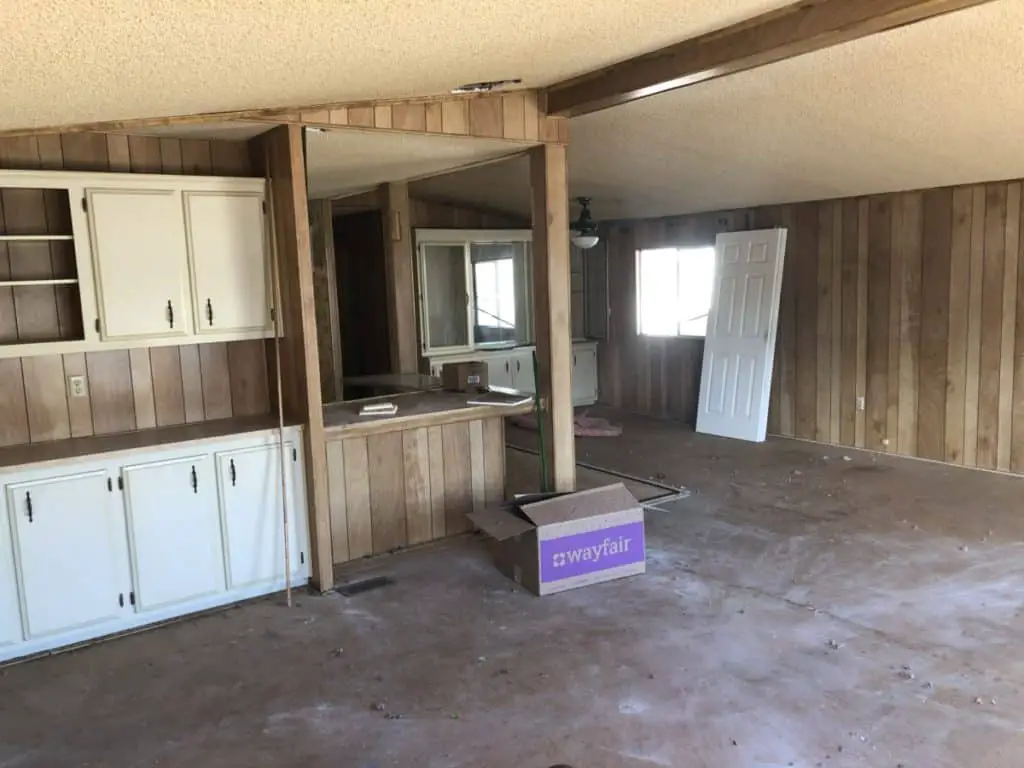
Removing the popcorn texture by scraping, then retexturing make this type of ceiling feel much more modern.
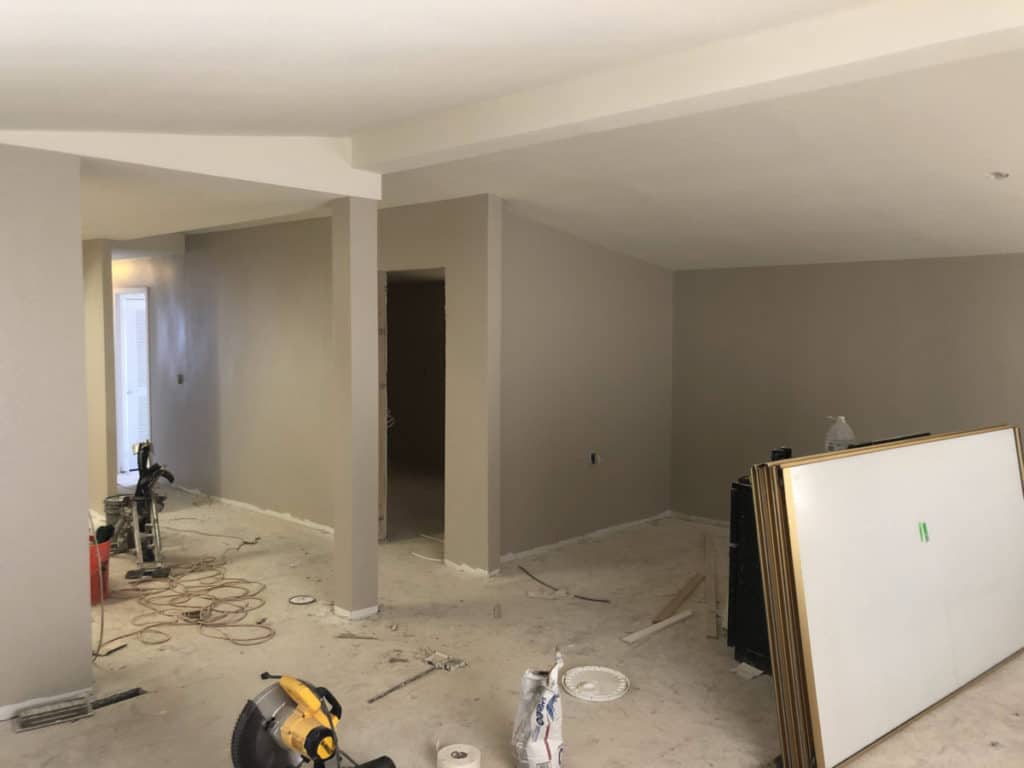
Trim
Back in the day, mobile home manufactured homes were trimmed out at just about every corner and seam in the home with narrow inexpensive plastic molding. Even in the 1980s through to the current day, many mobile homes still use these moldings to separate drywall panels when the walls are not taped and textured.
Having a bazillion of these plastic moldings all around the walls, ceilings, floors, doors, and cabinets, tend to give the home that “trailer” feeling.
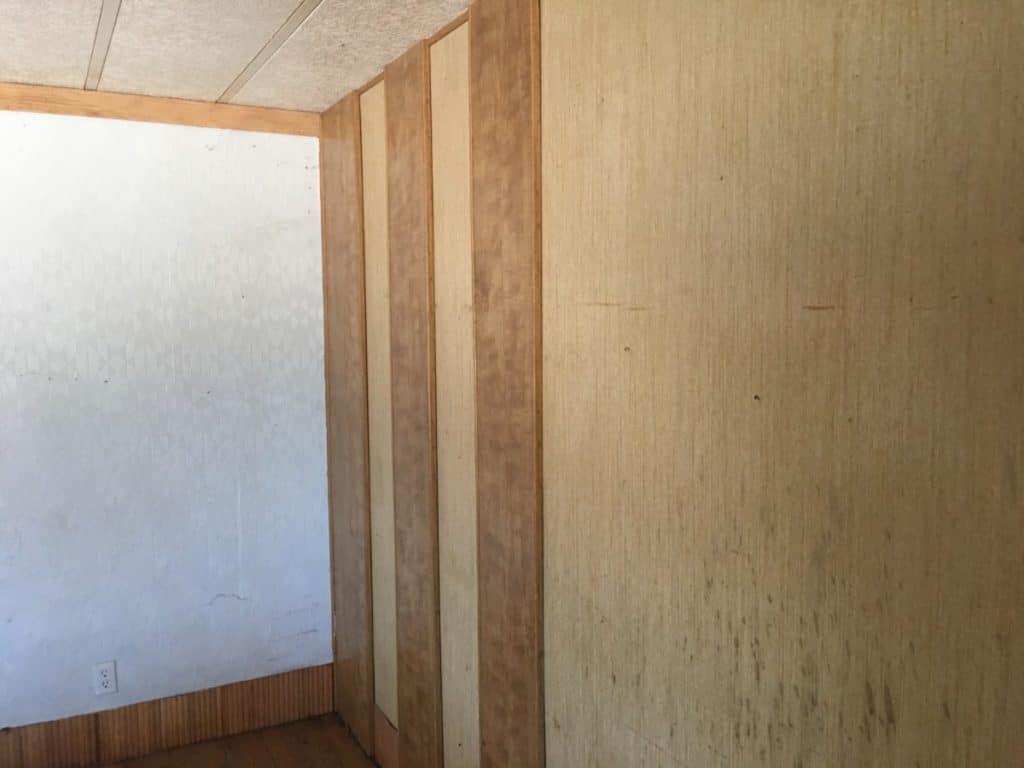
Fortunately, it is easy to remedy the problem. If you’re going to tape and texture the walls in the home, remove all of the moldings, replacing them with stick-built home molding types around the doors, baseboards, and windows.
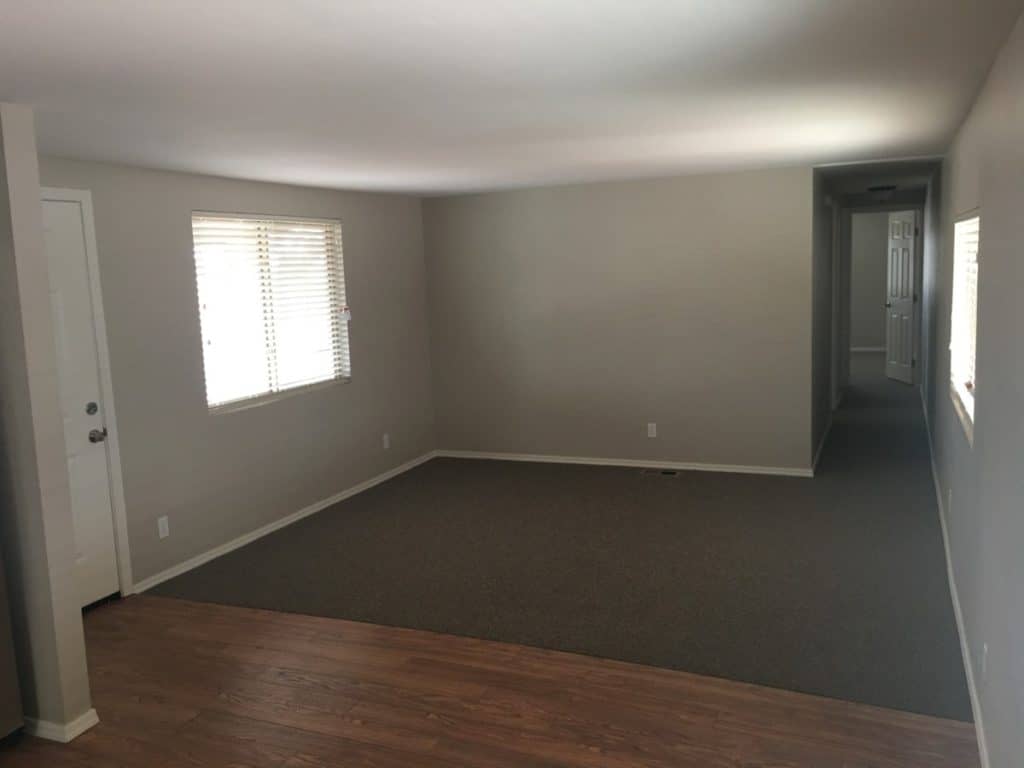
Even if you are just going to paint your wood paneling, removing the cheap plastic moldings and replacing them with a better product does wonders for the look and feel of a manufactured home. Make sure you caulk completely around every molding so that there are no cracks visible between the moldings and the surfaces.
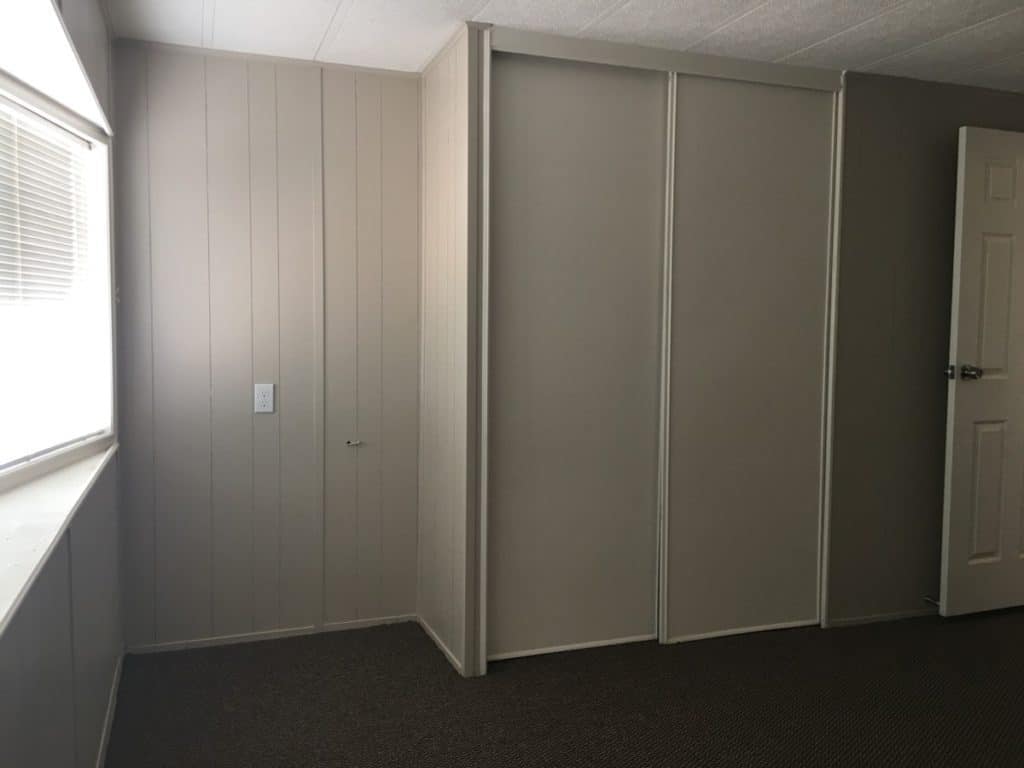
In the home pictured above, we decided not to tape and texture the walls and ceilings since the old paneling was still in excellent condition. We did remove all of the original plastic moldings and replaced them with real wood molding. We caulked every side of every molding on the walls, floors, doors, and ceilings. The final product, while not as attractive as tape and texture, still looks far better than it did originally.
Cabinets
It is common knowledge that the quality of cabinets in manufactured homes have most often been a durable, but inexpensive cabinet. Thins are changing in the past decade or so. Many new manufactured homes offer as options high quality cabinets; sometimes better than what you might find in a site-built home.
Many of the cabinets in the older homes are particle board, even the face frames and doors. They often have a layer of vinyl or plastic over them. If taken care of, they may last decades, but they also look and feel their part.
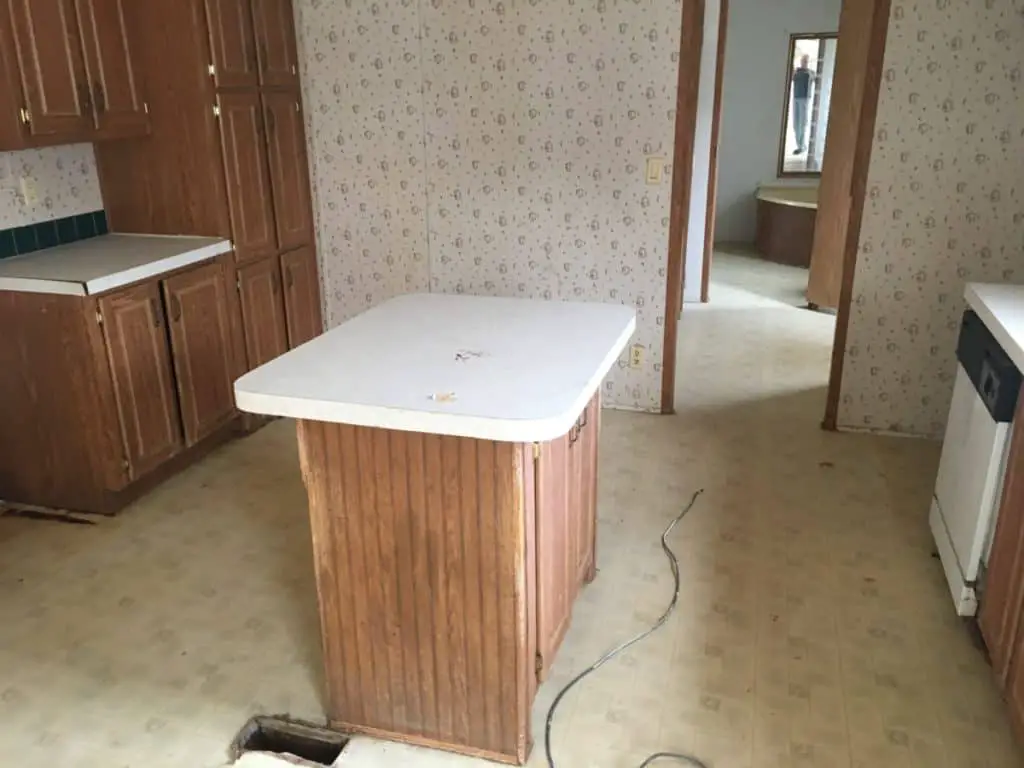
In the home above, we were doing a remodel and flip in 2018. At that time, these cabinets were 20 years old. They were inexpensive particle board construction with a thin vinyl veneer over them. Notice also, the lightweight and inexpensive hinges, which just add to the cheap feeling.
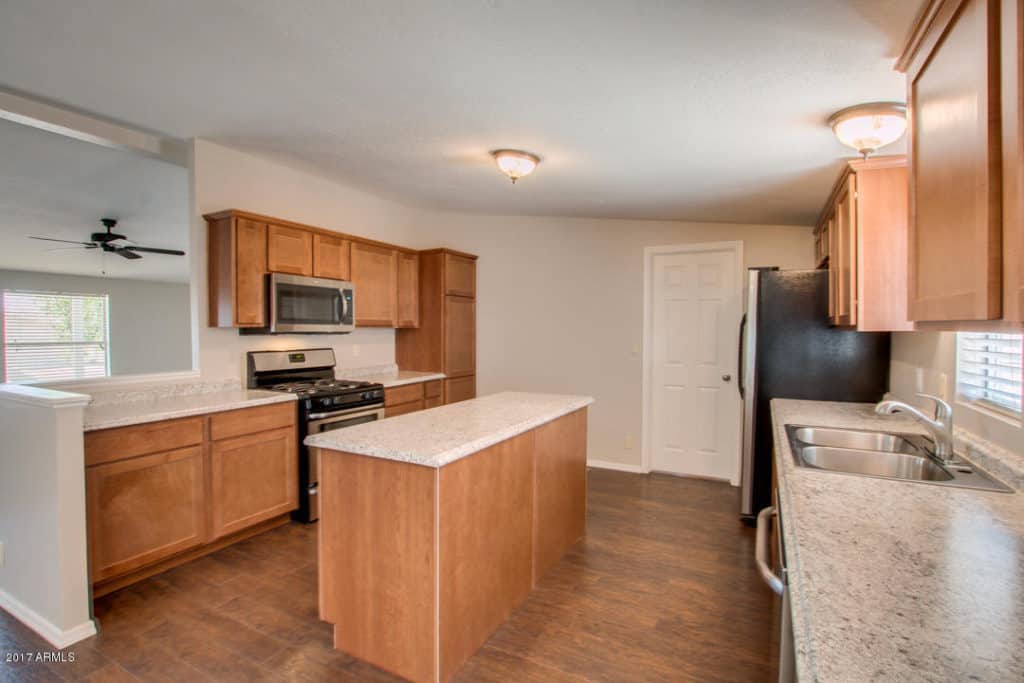
As part of the remodel, we replaced all of the cabinets throughout the house. These cabinets still had particle board boxes, as most production cabinets are. But, they have solid wood face frames, drawer fronts, and doors. We also installed a crown which really dresses up the look of the kitchen. This kitchen would not look out of place in any site-built traditional home.
Vanities
When working on creating a quality feeling home, don’t leave the old bathroom vanities in place when replacing the kitchen cabinets. When homes are remodeled room by room, nothing matching, it brings down the feeling of the entire house.
This post is about making the inside of your manufactured home feel like that of a traditional home. New vanities, that match the other cabinets in the house bring a cohesive aesthetic to the home.
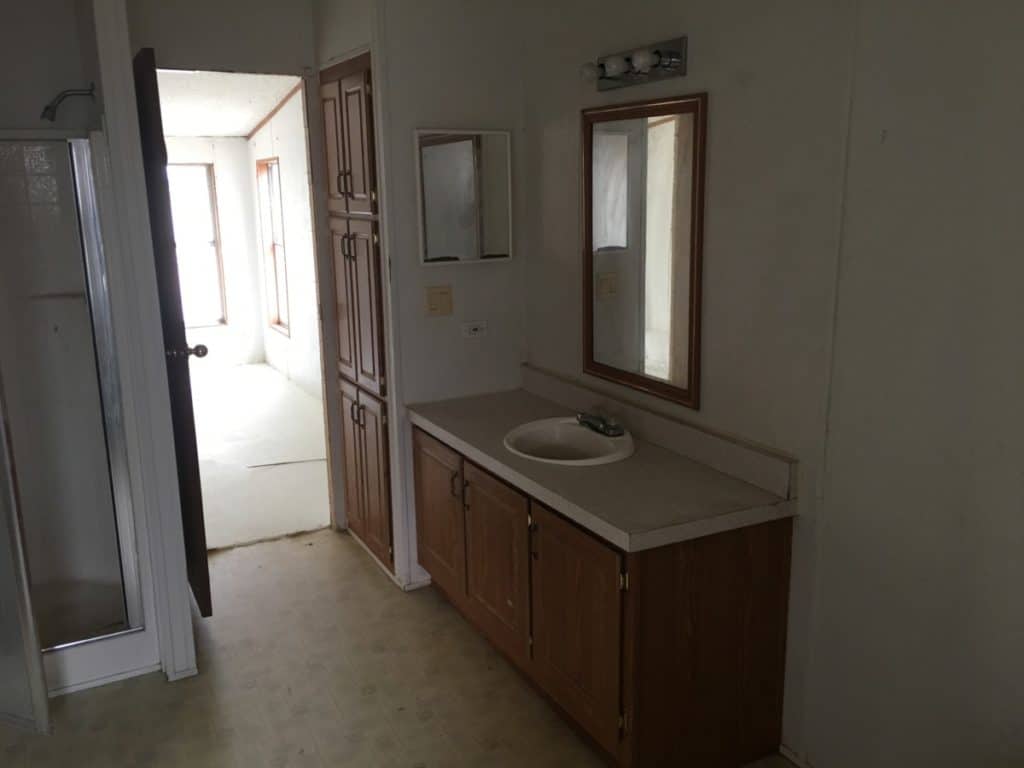
Notice that in the above bathroom, which is the master, the cabinets were the same low quality vinyl covered type that was in the kitchen. These were in much better shape than those in the kitchen. However, if we had of left these low quality cabinets in the bathrooms, the feeling of the entire house would suffer.
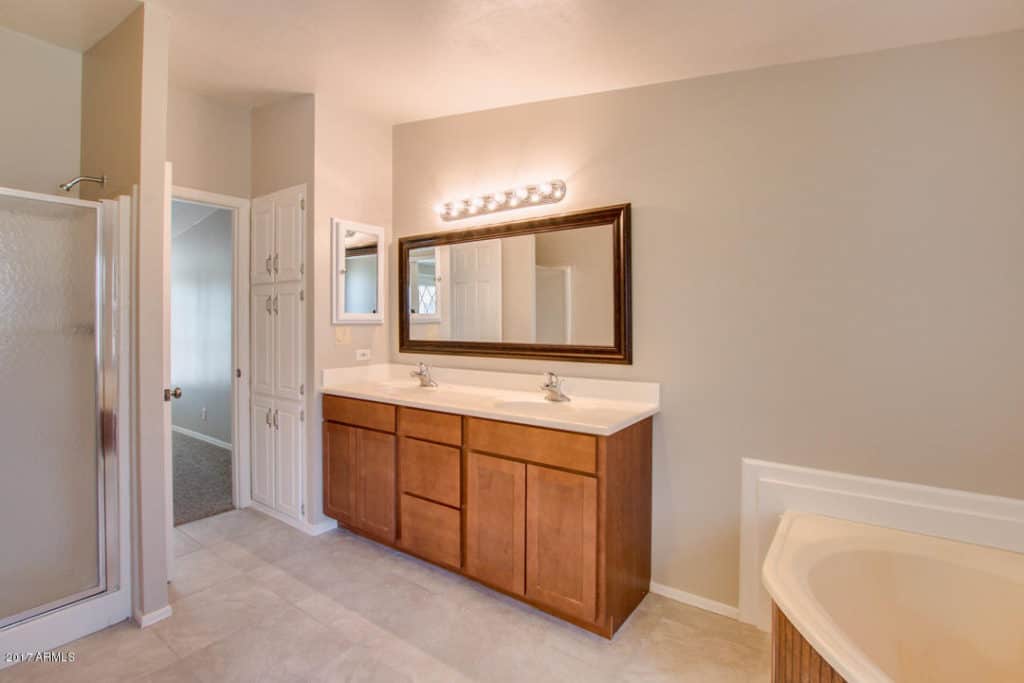
We replaced the vanity and made dual sinks. Note that we did leave the face frames for the linen cabinet; painting them. This was a cost cutting move, as we purchased all of the cabinets from a ready-made cabinet wholesaler. To replace the linen closet face frame, we would have had to have it custom made. Our solution looks fine for our purpose of selling the home, but to really do it right we should have turned the linen closet into an actual closet with a regular door. That would have solved the problem.
Countertops
Most countertops today come in laminate, granite, or quartz. Of course, stone tops will look better than laminate, and unless you’re installing the laminate tops yourself, the stone tops can be had in most metro areas for not too much more.
The feel of the stone tops will certainly make your manufactured home feel much more like a traditional home with quality stone tops.
The decision to upgrade to granite or quartz is often a financial one, which is why we always refer to our guide on Mobile Home Resale Value and Appreciation to calculate the ROI for high-ticket items like stone countertops.
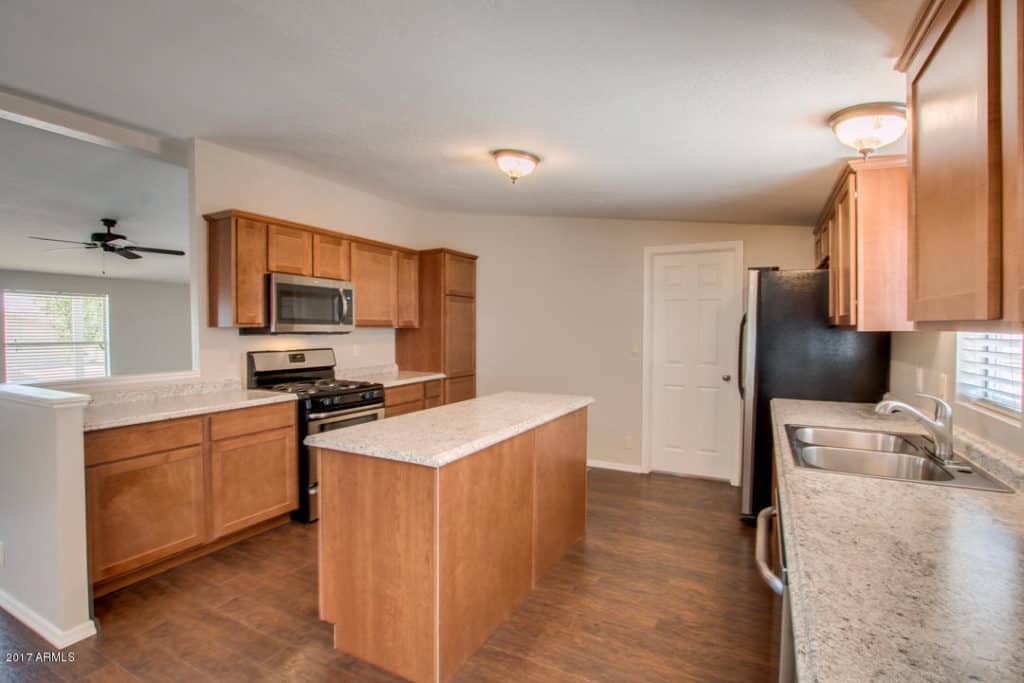
We used laminate in this kitchen. The countertops are new as are the cabinets. Overall, they look pretty good, and almost like granite. But when you touch them or use them, they do not have the heavy, substantial feel that quartz or granite would have.
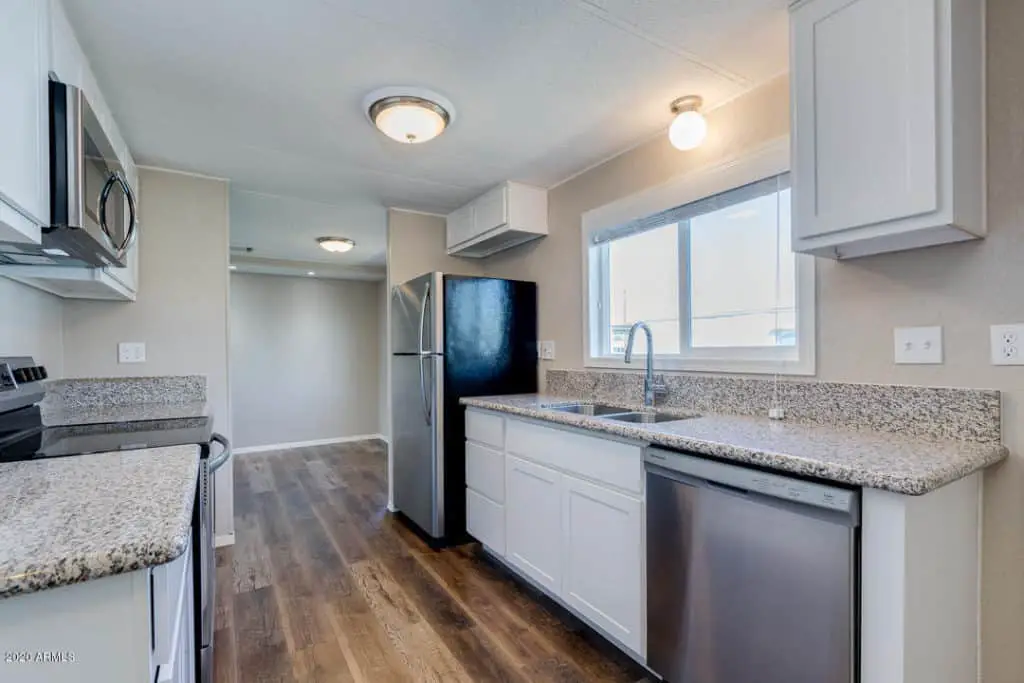
In the home pictured above, we put granite in the kitchen and bathrooms, along with new cabinets. The granite, including installation, cost only $350 more than we would have spent on new laminate countertops.
Doors
Whether we’re talking exterior or interior doors, many older manufactured homes had doors, hinges, and hardware that just felt cheap. Many newer manufactured homes today use the same types of doors that you might find in a production built traditional home (tract house).
When we are remodeling an older manufactured home, we will usually replace all of the doors, interior and exterior, unless the original doors and jambs are in such great shape that there is no need (usually not the case).
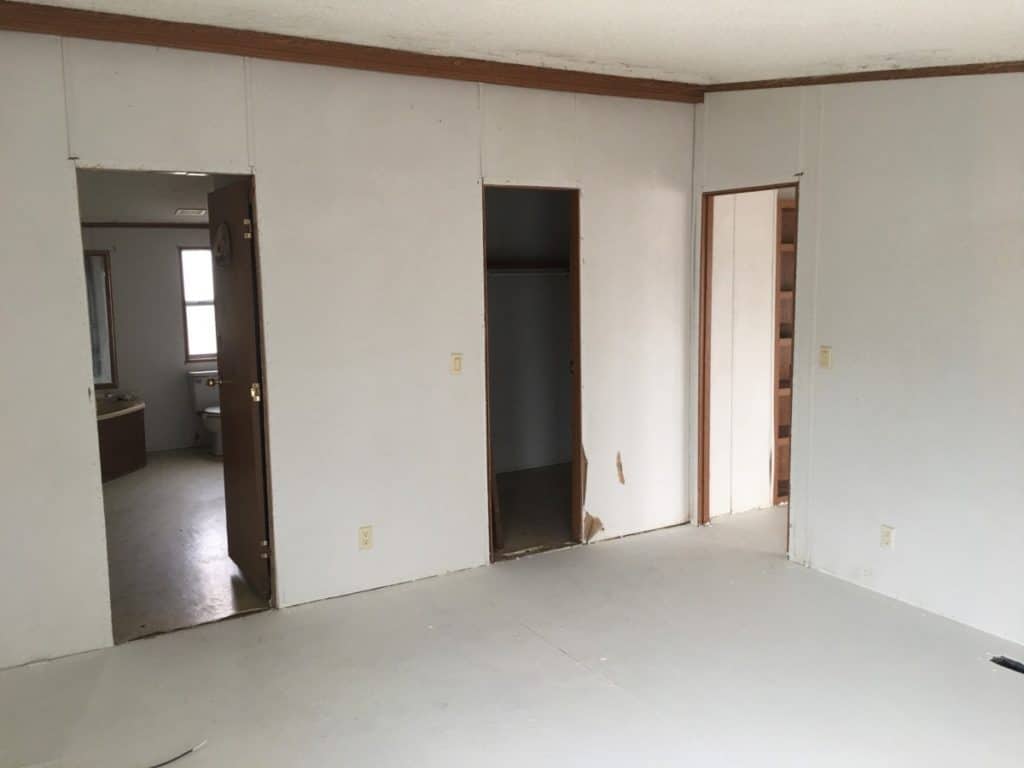
This isn’t the best photograph, but you can see on the open bathroom door how unattractive the door, the hinges, and the door knob are. When we replace the doors, we take out the jambs as well, as the originals are usually not as robust as we’d like.
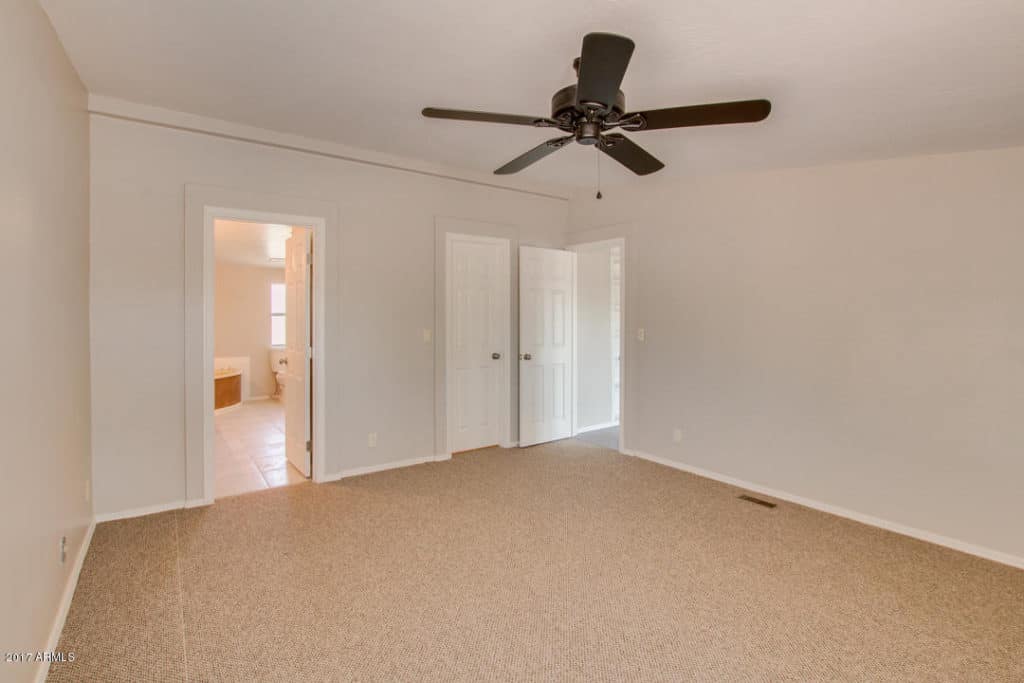
The above photograph is of the same room in the same house after remodel. Each door was replaced with an in-stock pre-hung door from Home Depot. Since the jambs are a bit thicker than the originals, we put an additional layer of drywall around the door to thicken the wall to the width of the new door jamb. Notice how doing this also gives an additional architectural interest to the wall. It certainly makes it look more upscale.
Hardware
First, let’s define what is meant by hardware in this section:
- Door knobs
- Door hinges
- Light fixtures
- Plumbing fixtures
- Ceiling fans
Often, when you enter an older manufactured home, one thing becomes immediately apparent. Most of all of the above items that we are considering “hardware” are generally the lightest weight, least expensive materials available.
Most often they are durable, as we’ve seen many 30 plus year old homes with all of these original fixtures still functioning as designed, that doesn’t stop them from making the home feel a bit shabby from the day it was delivered.
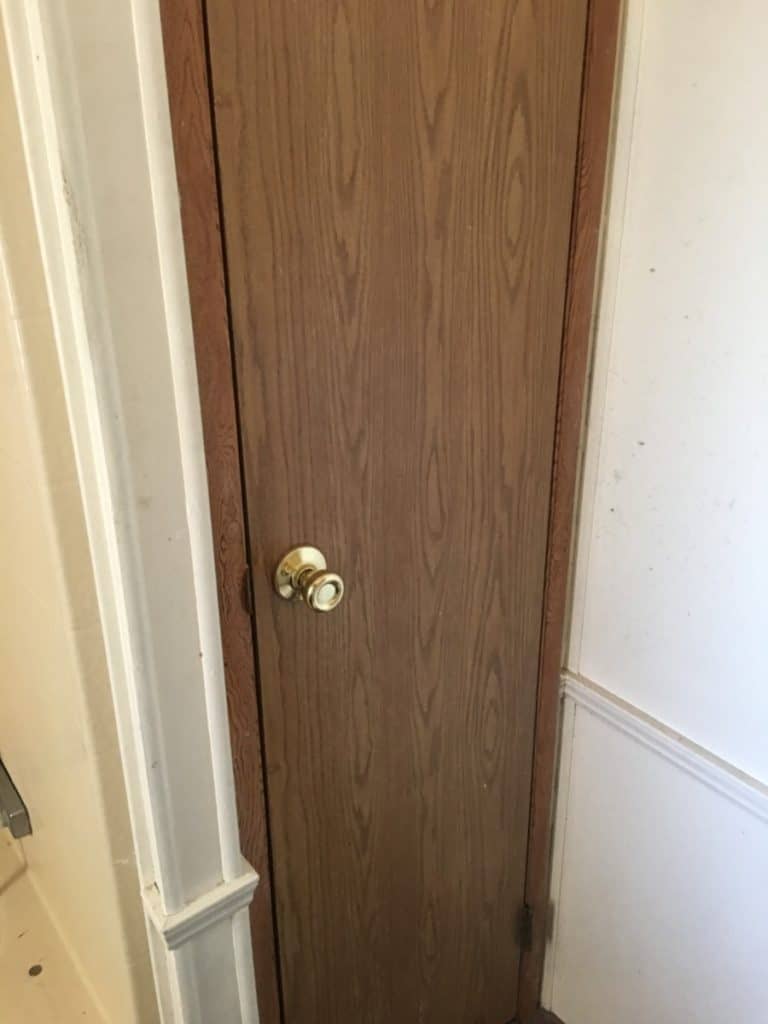
There would be too many examples of pictures to show for this category. This door with just two hinges and the original door knob in this older mobile home shows exactly how the hardware makes the home feel unattractive.
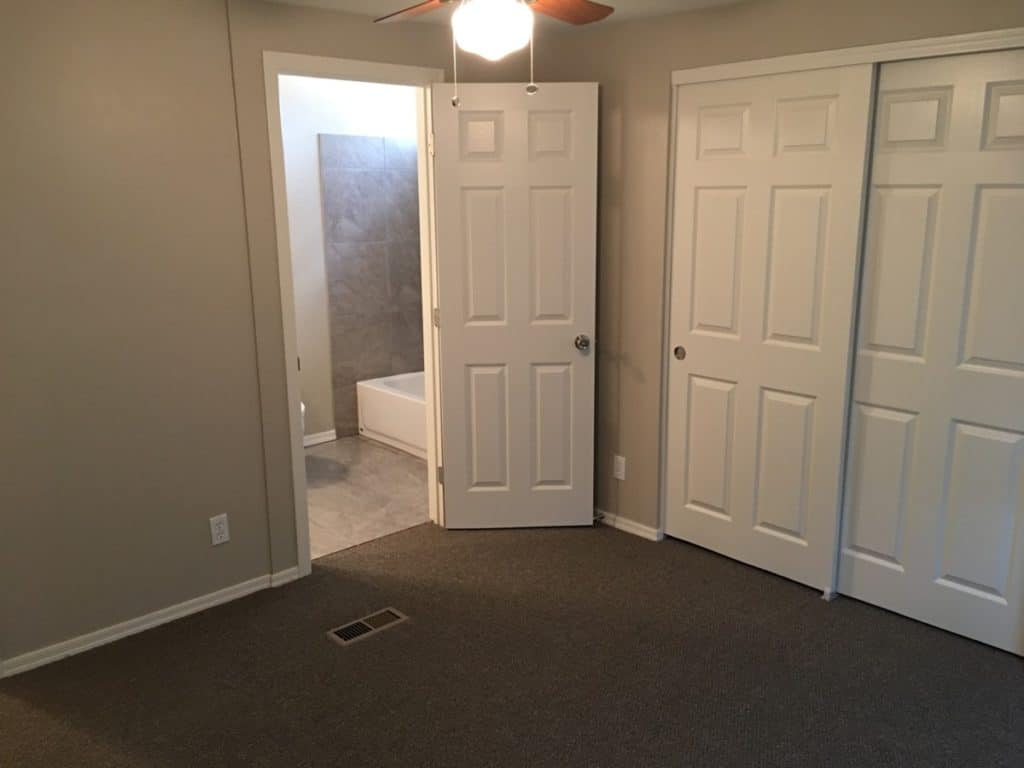
The above picture of the same mobile home shows how much of a transformation can be done. Nobody would know from the above picture that it was taken inside of a single-wide mobile home. Note the upgraded hardware, 3 hinges, and proper doors.
Upgrading the hardware is the cheapest way to make the biggest impact. Focus on matching satin nickel or matte black finishes across all door knobs, cabinet pulls, and light fixtures. This consistency provides the upscale, unified look of a traditional home. Shop our list of recommended matching interior door and cabinet hardware sets.
Flooring
Flooring can be what makes a home feel cohesive. Often, we’ll enter mobile homes that have many types of flooring, all in the same home. Multiple types of flooring in the same house causes the overall space to feel cramped and hodgepodge.
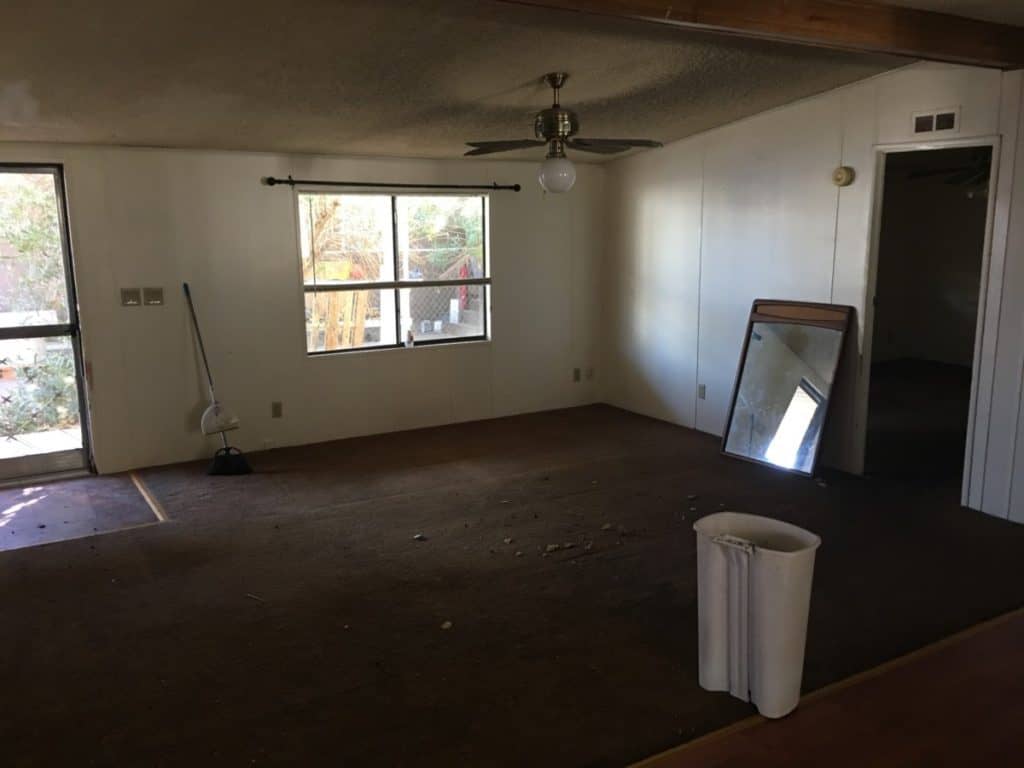
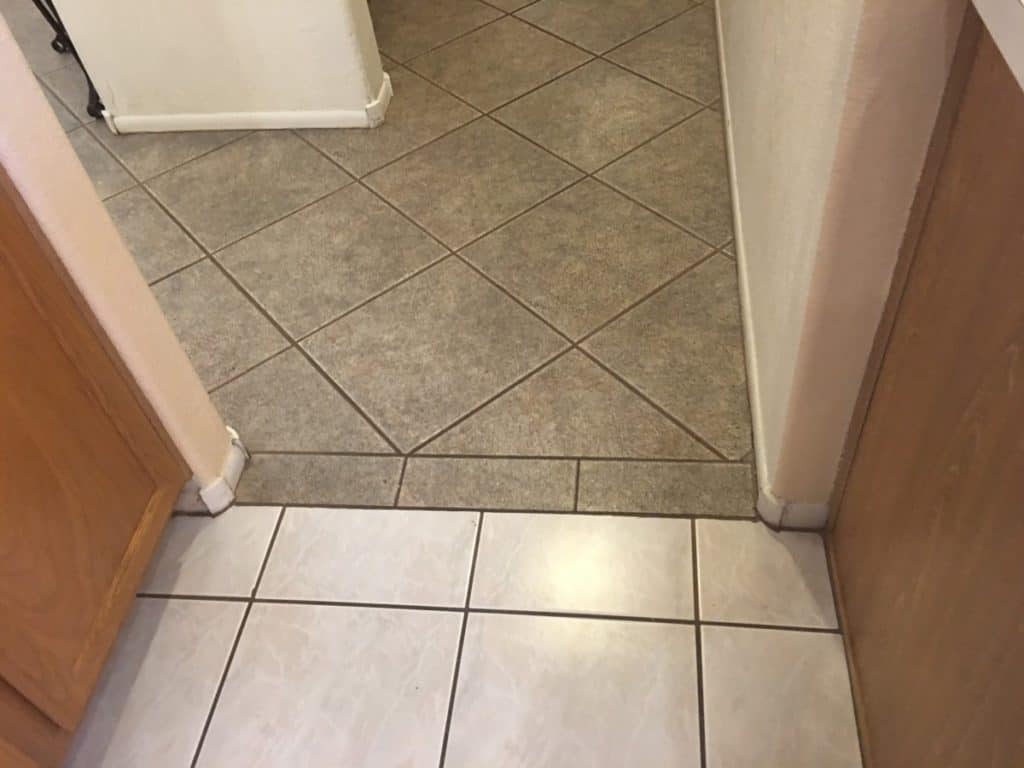
In the above pictures, you can see that when there are multiple types of flooring, it breaks up the flow and feeling of a room. A actually spacious room can feel much smaller because of this.
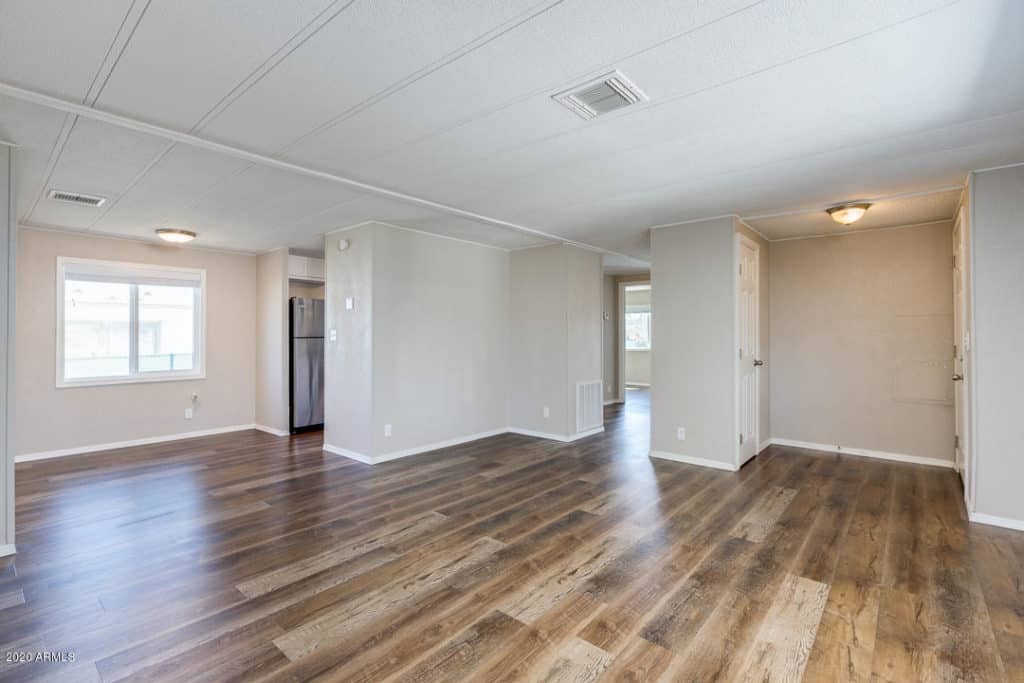
When we started the remodel on the home in the picture above, there were actually 4 types of flooring visible from this same spot. Notice in the picture how the plank vinyl flooring throughout the home pulls everything together and makes the home feel much larger.
Luxury Vinyl Plank (LVP) is the material of choice for manufactured home remodels because it is durable, waterproof, and extremely cost-effective. We recommend purchasing a commercial-grade, click-lock LVP flooring for superior results. See the top-rated LVP flooring options we use for flips here.
Related Questions
How Do You Update An Old Mobile Home?
Whether you are an investor looking to make a high margin from a rental property, or someone looking for affordable housing for your family, an older mobile home can be a great place to start!
The secret? For every dollar you put into the old mobile home, you want to be able to get a $2 return on the investment. If you hold to that formula, rarely would you ever lose money. When actually doing the remodel, it is tempting to keep putting money into it, regardless of the return. We have often been guilty of doing too much!
The following are the steps we take at Mobile Home Friend as we remodel an older mobile home.
- Find, evaluate, and acquire the right older mobile home
- Plan before you start the remodel
- Demolition
- Cleanup
- Make repairs and modifications
- Landscaping
There are thousands upon thousands of great deals to be had on older mobile homes; all across the country. So, finding the right bones to work with will go a long way in making sure your investment pays you dividends.
We are often offered mobile homes for free from various parks, or tenants in parks looking to get out. And, we turn many of these down! Why, you ask? We find some of them simply aren’t worth putting any money into them. Each case is unique and depends on the given the market surrounding that house.
Should You Remodel An Older Mobile Home?
Older manufactured homes are far less expensive to buy than a new mobile home, and a fraction of the cost of a site-built home. Whether you plan to live in the home, flip it, or buy it as a rental investment, does it make sense to invest money into an older home?
At Mobile Home Friend, our answer to this question is a RESOUNDING “YES! We have done this with homes that were given to us, homes that we paid less than $1,000 for and homes that we’ve paid up to $10,000 for. We’ve yet to lose money on any of them! We will caution that if the home is a pre-HUD (built prior to June 1976) it may not be the wisest choice.
That said, approach remodeling any mobile home with CAUTION! There are lots of things to look out for in making the decision on how much remodeling you should do.
Written by a real estate investor who has successfully renovated over 100 properties, specializing in maximizing value by transforming manufactured home interiors to look like traditional stick-built homes.

